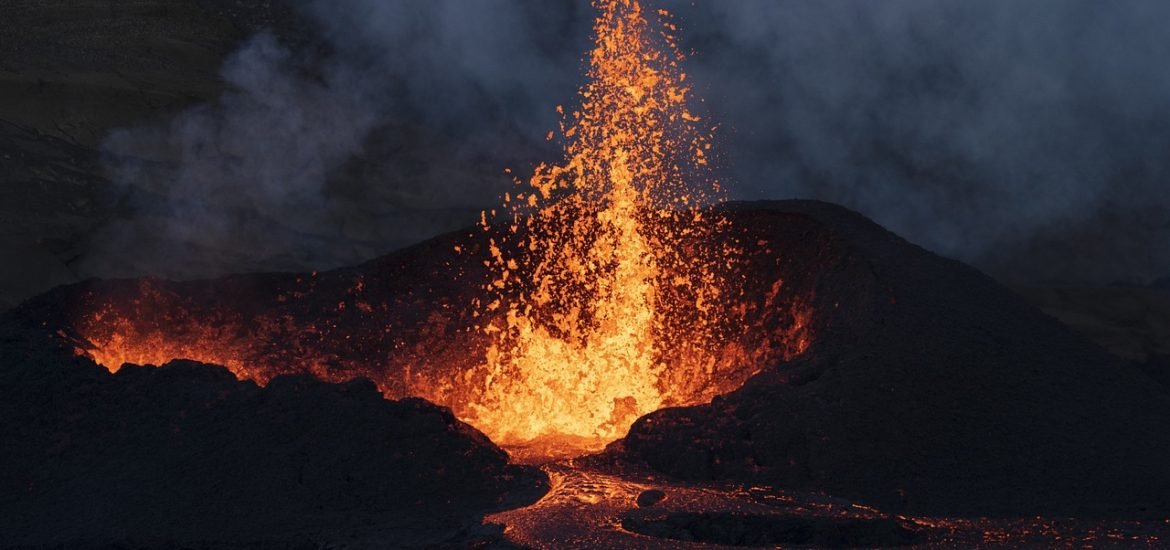
Understanding how molten rock behaves 20km below the Earth’s surface could help improve our predictions of volcanic activity, according to a study published in Science Advances. The authors suggest this new method could save the lives of many people living in areas near volcanoes.
Volcanic activity is currently predicted based on the volcano’s activity, but the analysis only goes down a few kilometres below the crust. This is the area that contains the molten rock potentially ready to erupt. However, this study highlights the need to dig for deeper clues in the Earth’s crust, where rocks melt into magma before rising to chambers closer to the surface.
To understand how volcanoes work, a team of researchers from Imperial College London and the University of Bristol, UK, analysed the frequency, composition, and size of volcanic eruptions around the world. Results indicate that the frequency of eruptions is closely linked to how long it takes for molten rock (known as magma) to form at a depth of up to 20 km beneath the Earth’s crust. Researchers believe that the findings will help them predict volcanic eruptions more accurately, ultimately protecting local people and helping mitigate risks to the environment.
During this study, the team analysed 60 of the most explosive eruptions worldwide, including in the United States, New Zealand, Japan, Russia, Argentina, Chile, Nicaragua, El Salvador, and Indonesia. “We looked at volcanoes around the world and dug deeper than previous studies that focused on shallow underground chambers where magma is stored before eruptions. We focused on understanding magma source reservoirs deep beneath our feet, where extreme heat melts solid rocks into magma at depths of around 10 to 20 kilometres,” said Dr. Catherine Booth from Imperial College London.
Using this data, the team created computer simulations to mimic the process of magma flowing from deep within the Earth’s crust and then moving up to originate a volcanic eruption. It turned out that the most important factor is how buoyant magma can be. “Contrary to previous beliefs, our study suggests that the buoyancy of the magma, rather than the proportion of solid and molten rock, is what drives eruptions,” said Dr Booth. “Magma buoyancy is controlled by its temperature and chemical composition compared to the surrounding rock– as the magma accumulates, its composition changes to make it less dense, making it more ‘buoyant’ and enabling it to rise. Once the magma becomes buoyant enough to float, it rises and creates fractures in the overlying solid rock – and it then flows through these fractures very rapidly, causing an eruption.”
In addition, researchers looked at how magma behaves once it reaches shallow underground chambers before erupting. The results showed that the longer magma stayed in these chambers, the smaller eruption was. The authors suggest that as magma loses heat in these chambers, it loses the ability to create large eruptions.
“By improving our understanding of the processes behind volcanic activity and providing models that shed light on the factors controlling eruptions, our study is a crucial step towards better monitoring and forecasting of these powerful geological events,” concluded Professor Matt Jackson from Imperial College London. “Our study had some limitations: our model focused on how magma flows upwards, and the source reservoirs in our model contained only molten rock and crystals. However, there is evidence that other fluids such as water and carbon dioxide are also found in these source reservoirs, and that magma can swirl and flow sideways.”
Booth, C et al. Source reservoir controls on the size, frequency, and composition of large-scale volcanic eruptions.Sci. Adv.10,eadd1595(2024).DOI:10.1126/sciadv.add1595